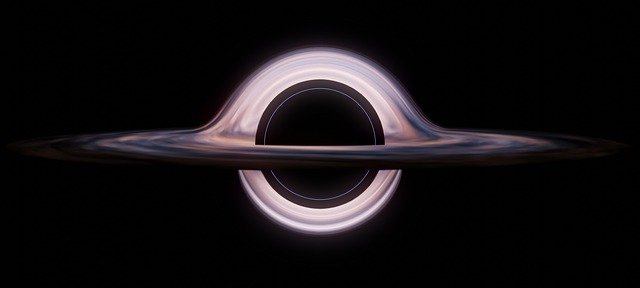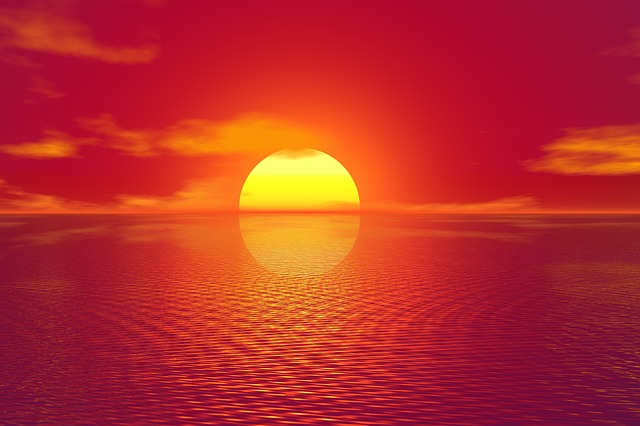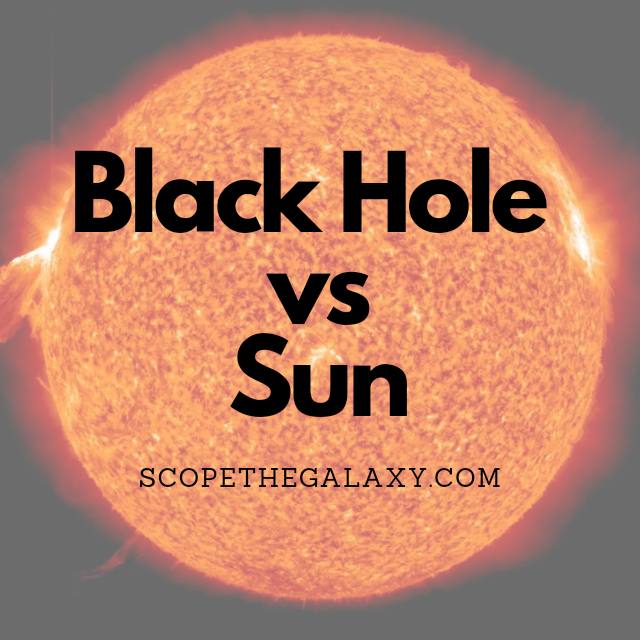*This post may contain affiliate links. This means we may make a commission if you purchase an item using one of our links*
Black holes and our Sun are completely different in many ways from the temperature they exude, where the sun is 6000°C and black holes nearly absolute zero, the significant discrepancy in density, luminosity along with different ways they affect the surrounding space around them.
Black holes are formed after a star dies with anything that enters it essentially ceasing to be whilst the Sun is still an active star that continues to supply energy for the many beings within its local solar system to continue existing and thrive
Continue reading for a more thorough break down of both entities along with the similarities and differences between the two.
What Is A Black Hole?
Table of Contents

A black hole is created when a large star about 4 solar masses large collapses below its Schwarzschild radius causing a supernova explosion. The density of the star creates a massive gravitational pocket and pulls everything within its vicinity into it.
The edge of a black hole is known as the event horizon and once something crosses this point, there is no escape. The gravitational pull of a black hole is so immense that even light is sucked inside.
All objects pulled in are subjected to an unimaginable crushing gravitational force as they are pulled toward the super dense end point of the black hole known as the singularity.
Black holes can be split into a variety of different types such as a supermassive black hole, intermediate mass black hole, and stellar mass black hole.
Stellar mass black holes are formed as described above by the death of a large star collapsing inward on itself. An intermediate mass black hole is slightly larger than a stellar mass black hole and may form be acquiring stars within its reach although not many have been discovered so little is still known about them.
A supermassive black hole can be found at the center of a galaxy and consumes stars and smaller black holes in order to obtain its massive size – millions of times larger than our Sun.
What Is The Sun?

The Sun is the bright, celestial entity at the centre of our solar system and is also a star that falls under the G type main sequence star bracket (also called a yellow dwarfs), all of which are medium sized stars that tend to be around 0.84 – 1.15 solar masses.
Our Sun is 1 solar mass, making it a medium sized medium star. It’s also on the brighter side for a yellow dwarf, the color that it emits is white in color as opposed to the slightly yellow color that less luminous yellow dwarfs would be.
Of course we still see the Sun as yellow or even red on Earth but, the reason for this significant color shift is because our atmosphere scatters and breaks up the photons that reach us, ultimately changing the true color of the light rays from white to the yellow, orange or red colors we see in our day to day.
As it is a star, the Sun will actively convert the hydrogen elements at its core into helium, through a process called nuclear fusion.
Nuclear fusion is the reason why it generates light and produces the energy we receive, helping us power machinery, technology, grow crops so on and so forth.
The process of nuclear fusion also affects how hot our star burns, hitting temperatures of 6000°C on a day to day basis. This will be the case for another 4.5 – 5 billion years until it’s unable to convert hydrogen into helium.
Once hydrogen cannot be converted, an imbalance between the inward and outward forces keeping the Sun together will occur, causing an imbalance which would result in our Sun bloating up many many times its current size.
When this happens it will enter its red giant phase, where it’ll be around 256 times larger than it is now.
This phase will last for around a billion years until it sheds it mass through a process called planetary nebula, leaving behind only a dead white dwarf remnant.
Can The Sun Become A Black Hole?
The short answer is no. This is because once the Sun is nearing the end of its life, the chances of it experiencing a supernova explosion and have around 3 solar masses of materials left over is simply not going to happen.
Our Sun is currently 1 solar masses in size and when it becomes a red giant it will only decrease in weight despite bloating up in diameter. Black holes require at least 3 solar masses in remnants to even begin forming into arguably the densest and darkest entity in our universe.
In short, for stars to even have the opportunity to become a black hole, they will need to have an initial solar mass of 20+ and the Sun is far below this
Similarities Between The Sun And Black Holes
The only thing that a black hole and the Sun have in common would be that both were initially stars that produced light and vast amounts of energy converting hydrogen to helium via nuclear fusion.
Other than this, they are distinctly different from one another.
Differences Between The Sun And Black Holes
Some of the differences between black holes and the Sun include the following:
- Black holes are between 10 times and 12 billion times the density of the Sun, where supermassive black holes cover the upper echelon of the density.
- The Sun is around 6000°C in temperature whilst black holes are 1.4 x 10-14 Kelvin which is close to absolute 0.
- Black holes are remnants of dead stars whilst the Sun is still an active star.
- Black holes have a lifespan far far longer than the Sun where a modest sized black hole of 5 solar masses would take around 2.6 * 10^69 years to dissolve whilst the Sun only has 5 – 7 billion years of life left till it dies and becomes a white dwarf.
- Black holes have more mass than the Sun where the sun is 1 solar masses in size and black holes between 3 to billions for supermassive black holes.
- The Sun is more luminous than black holes with a +1 luminosity rating whilst black holes are at least +750,000 which essentially means they are extremely dark.
- Black holes allow no light to escape its grasp whilst the Sun produces light, an activity that only active starts can do.
- Black holes can warp space and dilate time around them whilst the sun cannot.
- Black holes have a stronger magnetic field than our Sun.
- Our Sun’s core proactively converts hydrogen via nuclear fusion whilst black holes cannot do this.
Summary
Both entities are gargantuan entities in their own right but, the Sun pales in comparison to black holes in a number of ways, whether it comes to density, mass, it’s effect on the environment and even lifespan.
The Sun is an active resource and will continue to provide energy to us for many billions of years whilst black holes are the remnants of stars many times the size of our sun that is already dead will continue to exist for a time so long that our universe hasn’t even eclipsed 0.00000001% of its life in its entire existence.
In the end of it all, the only thing that links the two together is that black holes were once stars too.

